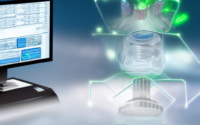Renewable Energy Tech: Innovations for a Greener Future
Renewable Energy Tech: Innovations for a Greener Future
Introduction
Renewable energy technologies have been gaining significant traction in recent years as the world shifts its focus towards sustainable and greener alternatives. The need to reduce dependence on fossil fuels and mitigate the environmental impact of energy generation has fueled the development of innovative technologies that harness renewable sources to produce clean energy. In this article, we will explore some of the most exciting renewable energy tech innovations that are shaping a greener future.
Solar Power
Solar power is one of the most widely recognized forms of renewable energy. The advancements in solar technology have made it a viable option for both residential and commercial applications. Solar panels, made of photovoltaic cells, capture sunlight and convert it into electricity. But what’s even more exciting is the development of new solar technologies.
1. Solar Paint: Researchers are exploring the possibility of using solar paint that contains tiny nanoparticles capable of generating electricity when exposed to light. This revolutionary technology could potentially turn any surface into a solar panel, allowing us to make use of even more solar energy.
2. Transparent Solar Cells: Imagine windows that not only let in natural light but also generate electricity! Transparent solar cells are being developed to capture sunlight without obstructing the view. These cells can be integrated into windows, building facades, and even electronic devices, revolutionizing the way we utilize solar power.
Wind Power
Wind power is another popular source of renewable energy. Wind turbines harness the kinetic energy of wind and convert it into electricity. Advancements in wind power technology are making it more efficient and accessible.
1. Vertical Axis Wind Turbines: Traditional wind turbines have horizontal axis designs, which require specific wind directions to operate optimally. Vertical axis wind turbines, on the other hand, can capture wind from any direction, making them more versatile and suitable for urban environments where wind patterns are unpredictable.
2. Airborne Wind Energy: The concept of airborne wind energy involves using kites or tethered drones to capture high-altitude winds. These devices are equipped with turbines that generate electricity as they are propelled by the wind. Airborne wind energy has tremendous potential and can be deployed in offshore areas where traditional turbines are challenging to install.
Hydro Power
Hydro power relies on the flow of water to generate electricity. While conventional hydroelectric power plants depend on large dams, new innovations in hydro power are enabling smaller-scale installations.
1. Run-of-River Systems: Run-of-river systems generate electricity without the need for dams. Instead, they divert a portion of river flow through a turbine, harnessing the kinetic energy of the water to produce electricity. These systems have a lower environmental impact, preserve natural habitats, and allow for continuous power generation.
2. Tidal Energy: Tidal energy utilizes the gravitational forces between the Moon, Earth, and Sun to generate electricity. Large underwater turbines are placed in areas with strong tidal currents, which rotate as the tide ebbs and flows. Tidal energy is predictable and highly reliable, making it a promising source of renewable power.
Geothermal Energy
Geothermal energy harnesses the heat generated from the Earth’s core to produce electricity or heat buildings directly. Advancements in geothermal technology are making it more accessible and economically viable.
1. Enhanced Geothermal Systems (EGS): EGS technology involves creating engineered reservoirs by injecting water into hot dry rocks deep underground. The heated water is then pumped to the surface, where the heat is converted into electricity. EGS has the potential to unlock vast geothermal resources globally, making it a crucial technology for the future.
2. Direct Use Geothermal: Direct use geothermal systems utilize the Earth’s heat for heating and cooling purposes without generating electricity. These systems are efficient and sustainable alternatives to conventional heating and cooling methods, reducing the carbon footprint of buildings.
Conclusion
The advancements in renewable energy technologies are paving the way for a greener and more sustainable future. Solar power, wind power, hydro power, and geothermal energy are just a few examples of the innovative solutions being developed to reduce our reliance on fossil fuels. As these technologies continue to evolve, they hold the key to combatting climate change and ensuring a cleaner environment for generations to come. By embracing and investing in renewable energy tech, we can collectively contribute towards a greener future.

